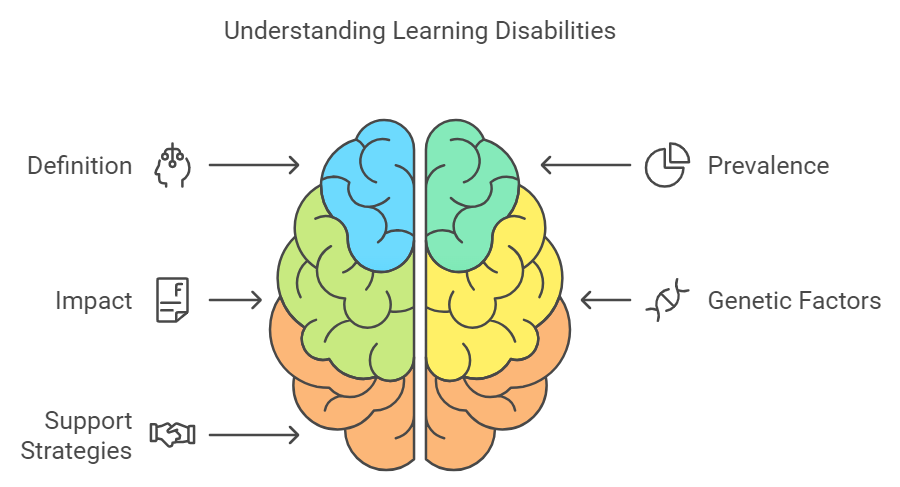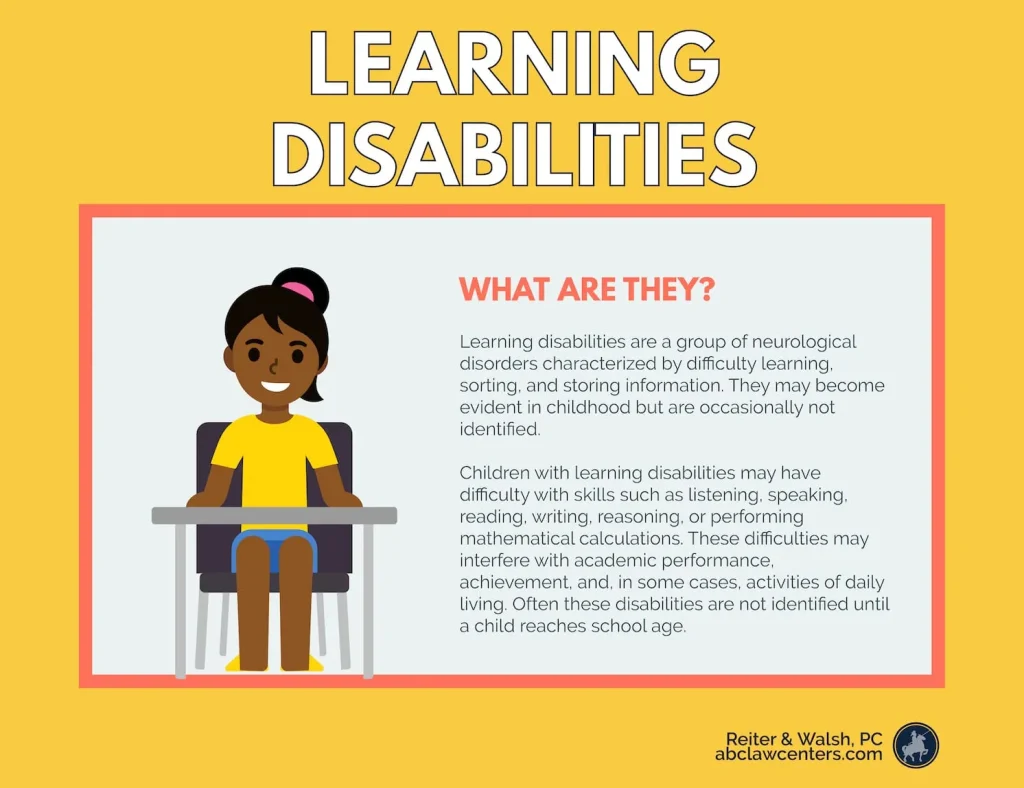Learning disabilities affect millions of students worldwide, making it challenging for them to acquire and process information in traditional educational settings. Understanding these disabilities and implementing effective support strategies can significantly improve educational outcomes. This article explores the identification of learning disabilities and various methods to support diverse learning needs.
Understanding Learning Disabilities

A learning disability is a neurological condition that impacts a person’s ability to read, write, speak, or perform mathematical calculations. These challenges are not related to intelligence but rather to how the brain processes information.
Types of Learning Disabilities
- Dyslexia – Affects reading and language processing.
- Dyscalculia – Affects mathematical abilities.
- Dysgraphia – Impairs writing skills.
- Auditory Processing Disorder (APD) – Affects how sound is processed by the brain.
- Visual Processing Disorder (VPD) – Impacts the ability to interpret visual information.
- Nonverbal Learning Disabilities (NVLD) – Affects motor coordination, social skills, and spatial awareness.
Signs and Symptoms of Learning Disabilities
Recognizing the early signs of learning disabilities is crucial for timely intervention. Some common indicators include:
- Difficulty in reading, writing, or spelling.
- Struggles with understanding and solving math problems.
- Poor memory and concentration.
- Trouble following instructions.
- Frequent confusion between similar-looking letters or words.
- Difficulty organizing thoughts or expressing ideas.
- Poor coordination or difficulty with motor skills.
Identifying Learning Disabilities
Early identification of learning disabilities is essential for effective support. Educators and parents can use multiple assessment tools and strategies, such as:
1. Observational Assessments
Teachers and parents should observe a child’s learning patterns over time, noting persistent struggles in reading, writing, or arithmetic.
2. Standardized Testing
Formal assessments like IQ tests, reading fluency exams, and phonological awareness tests help diagnose learning disabilities.
3. Psychological Evaluations
A clinical psychologist or special education professional can conduct a comprehensive evaluation to determine cognitive strengths and weaknesses.
4. Response to Intervention (RTI) Approach
RTI is a multi-tiered framework that helps educators identify students who need extra help by monitoring their progress over time.
Supporting Students with Learning Disabilities
After identifying a learning disability, the next step is implementing effective strategies to support diverse learning needs.
1. Individualized Education Plans (IEPs)
An Individualized Education Plan (IEP) is a legally mandated document in many countries that outlines specific accommodations, modifications, and support services for students with disabilities.
2. Differentiated Instruction
Educators can adapt their teaching strategies based on a student’s unique learning style:
- Visual learners benefit from diagrams, charts, and videos.
- Auditory learners thrive with verbal explanations and discussions.
- Kinesthetic learners need hands-on activities and physical engagement.
3. Multi-Sensory Learning Techniques
Engaging multiple senses enhances learning retention. Techniques include:
- Reading aloud while tracing words.
- Using manipulatives like counting blocks for math.
- Interactive learning tools like educational apps and games.
4. Assistive Technology
Technology can be a game-changer for students with learning disabilities. Some helpful tools include:
- Speech-to-text software for writing support.
- Audiobooks for dyslexic students.
- Text-to-speech programs to help with reading comprehension.
- Specialized apps that reinforce spelling, math, and cognitive skills.
5. Classroom Accommodations
Teachers can make simple changes to improve learning experiences for students with disabilities:
- Providing extra time for assignments and tests.
- Using large fonts or high-contrast materials.
- Breaking tasks into smaller, manageable steps.
- Offering alternative assessment methods, such as oral presentations instead of written exams.
6. Building a Supportive Learning Environment
A positive and inclusive classroom can make a big difference:
- Encouraging peer support and group work.
- Creating a non-judgmental atmosphere where mistakes are seen as learning opportunities.
- Reinforcing self-advocacy skills, teaching students to communicate their needs effectively.
Role of Parents in Supporting Children with Learning Disabilities
Parents play a vital role in reinforcing learning strategies at home. Effective parental support includes:
1. Establishing a Structured Routine
A consistent schedule helps children feel secure and reduces anxiety related to schoolwork.
2. Encouraging a Growth Mindset
Parents should reinforce that learning disabilities do not define intelligence. Praise effort over results to build confidence.
3. Creating a Distraction-Free Study Space
A quiet, organized environment improves focus and productivity.
4. Collaborating with Educators
Regular communication between parents and teachers ensures a coordinated support system for the child.
5. Seeking Professional Help
Educational therapists, speech-language pathologists, and special education tutors can provide additional support tailored to a child’s needs.
Conclusion
Identifying and supporting diverse learning needs is essential for creating an inclusive education system. With the right interventions, students with learning disabilities can thrive academically and develop the skills needed for lifelong success. By incorporating individualized instruction, assistive technology, classroom accommodations, and strong parental involvement, educators and caregivers can empower students to overcome their challenges and reach their full potential.

